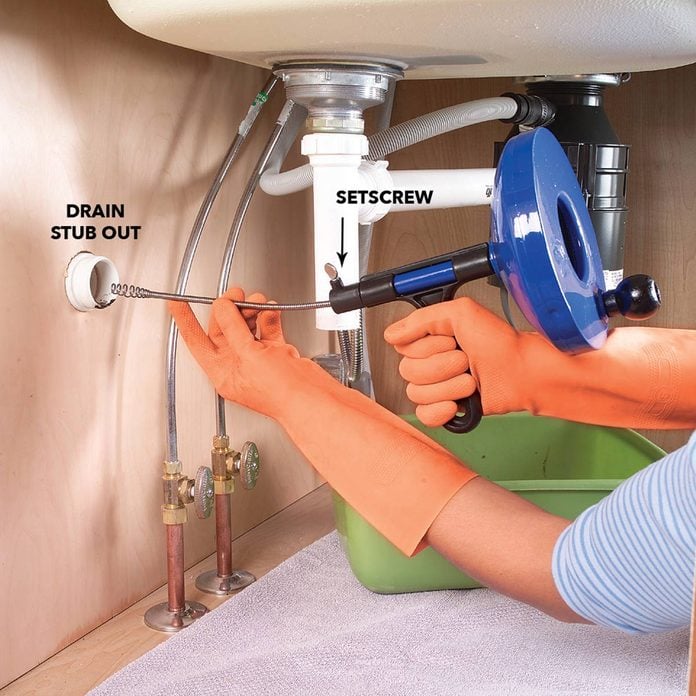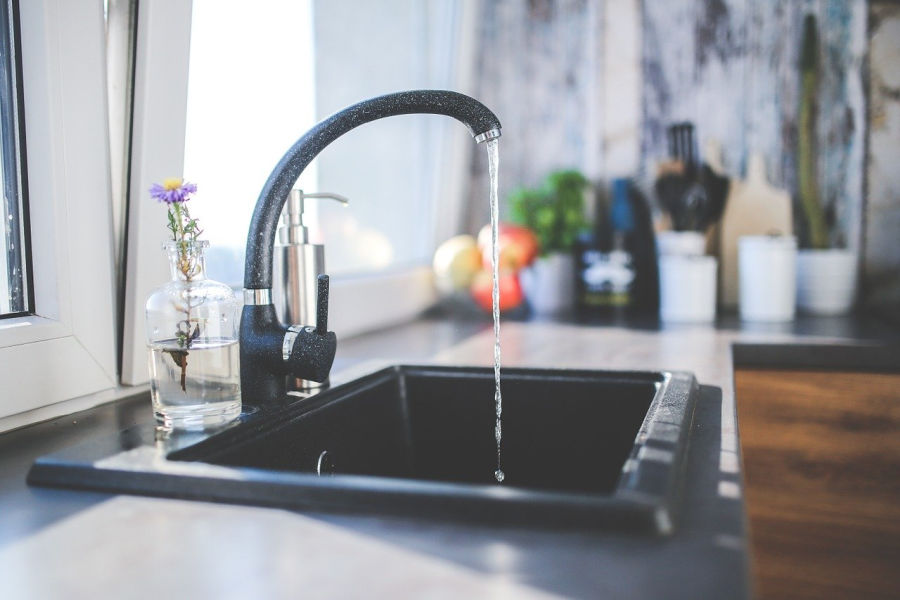The Big Blockage - 6 Causes Behind Your Kitchen Sink's Poor Drainage
The Big Blockage - 6 Causes Behind Your Kitchen Sink's Poor Drainage
Blog Article
What're your insights and beliefs about Why Is My Sink Not Draining??

It's not normal for your kitchen sink to congest several times in one month. If your sink obstructs two times a week, there's some problem going on.
A blocked kitchen drain doesn't simply reduce your chores, it deteriorates your whole plumbing system, bit by bit. Right here are some typical routines that urge sink blockages, as well as exactly how to avoid them.
You need appropriate garbage disposal
Reusing waste is wonderful, yet do you pay attention to your organic waste too? Your kitchen should have two separate waste boxes; one for recyclable plastics and another for natural waste, which can come to be garden compost.
Having actually a marked trash can will certainly assist you as well as your household avoid throwing pasta and also various other food residues down the tubes. Generally, these remnants soak up wetness as well as become obstructions.
The mistake isn't from your kitchen area sink whatsoever
Maybe the trouble isn't from your kitchen area sink, but the entire water drainage system. In such a situation, you may see that sinks as well as drains obtain blocked every other week. You need a specialist plumbing solution to fix this.
You're throwing coffee down the drain
Used coffee premises and also coffee beans still take in a significant amount of dampness. They might seem tiny adequate to throw down the drainpipe, but as time goes on they start to swell and also use up more room.
Your coffee premises ought to go into natural garbage disposal. Whatever fraction escapes (possibly while you're washing up) will be taken care of during your month-to-month cleaning.
You've been consuming a great deal of oily foods
Your kitchen sink may still obtain blocked despite having natural waste disposal. This may be due to the fact that you have a diet plan rich in oily foods like cheeseburgers.
This grease layers the within pipes, making them narrower and also even more clog-prone.
Make use of a plunger
Your pipe had not been repaired effectively to begin with
If you've been doing none of the above, however still obtain regular blockages in your kitchen sink, you should call a plumber. There could be a trouble with how your pipelines were installed.
While your plumber shows up, look for any leaks or abnormalities around your kitchen pipes. Don't attempt to deal with the pipes on your own. This might cause a crash or a kitchen flood.
A person tried to wash their hair in the cooking area sink
There's a right time as well as area for everything. The kitchen sink is simply not the appropriate place to clean your hair. Cleaning your hair in the cooking area sink will certainly make it clog sooner or later unless you utilize a drainpipe catcher.
While a drain catcher may capture most of the after effects, some hairs might still make it through. If you have thick hair, this might be enough to slow down your drain and also at some point create a clog.
There's more dirt than your pipelines can take care of
If you obtain fruits directly from a farm, you may observe even more cooking area dust than other individuals that shop from a mall. You can quickly repair this by cleaning up the fruits and also veggies effectively before bringing them into the house.You need appropriate waste disposal
My Kitchen Sink Won’t Drain - What Should I Do?
If Your Sink Has a Garbage Disposal...
Turn on the disposal. If the disposal hums and doesn’t turn, then there’s clog in the disposal unit.
Go to your circuit breaker panel, and switch off the circuit breaker to your garbage disposal.
Back in your kitchen, double-check that your garbage disposal is off by trying to turn it on. The disposal should not move, and it should not make any noise.
Lie down underneath your sink so that you can see and access the bottom of the disposal unit. Look for a hole that looks like the head of a hex-head bolt in the center of the unit.
Place an Allen wrench inside this hole and turn it from side to side until you feel a decrease in resistance and are able to rotate the wrench completely in a single direction. This action rotates your disposal’s blade manually.
Put the wrench aside, and press the disposal unit’s reset button or switch.
Flip your garbage disposal’s circuit breaker switch back on, and turn on the unit to see if the obstruction has cleared. If it hasn’t, repeat the steps above until the obstruction is removed.
How to Unclog a Kitchen Sink Drain
If you have a double bowl sink, seal one side of the sink with an airtight lid or a second plunger before plunging the other side. Otherwise, you won’t be able to create adequate suction.
Place the cup of the plunger completely over the drain opening.
Turn on the faucet, and let the water run until it completely covers the cup of the plunger.
Start plunging by pushing the plunger down and pulling up again in order to build up suction. Make sure that the edges of the plunger stay in contact with your sink, or else you’ll lose the suction.
If you have trouble forming a seal between your sink and plunger, add petroleum jelly to the mouth of your plunger, and try again.
Plunge about five or six times before removing the plunger to see if water starts to drain properly. In some cases, you’ll even be able to feel the clog become dislodged while you plunge because suddenly there will be much less resistance. Repeat the plunging process until the clog clears.
Once water is draining properly again, run hot water down the drain for 5 minutes to help clear away grease, grime, and debris from the clog. https://www.plumbingjoint.com/blog/2019/august/my-kitchen-sink-won-t-drain-what-should-i-do-/

My Kitchen Sink Won’t Drain - What Should I Do?
If Your Sink Has a Garbage Disposal...
How to Unclog a Kitchen Sink Drain
https://www.plumbingjoint.com/blog/2019/august/my-kitchen-sink-won-t-drain-what-should-i-do-/
Do you enjoy reading about What To Do When Your Kitchen Sink Won’t Drain? Make a remark down the page. We would be interested to see your ideas about this page. We hope to see you back again in the future. Liked our post? Please share it. Help other people check it out. We enjoy reading our article about Five Ways to Fix a Slow Sink Drain.
Schedule Today
Report this page